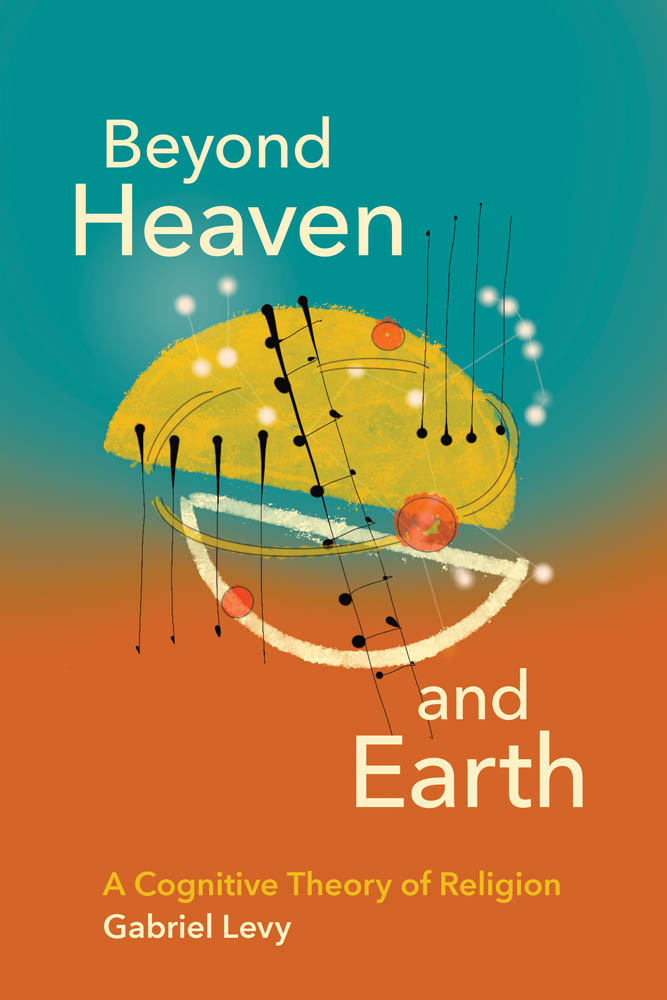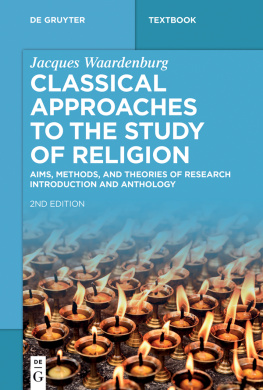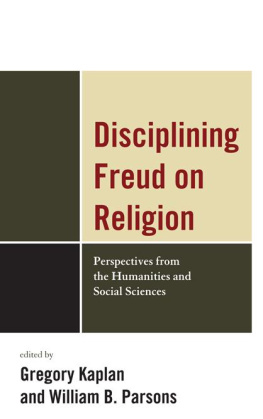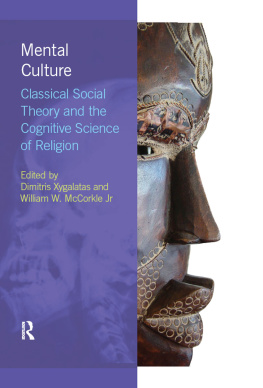Contents
Guide
Pagebreaks of the print version

Beyond Heaven and Earth
A Cognitive Theory of Religion
Gabriel Levy
The MIT Press
Cambridge, Massachusetts
London, England
2022 The Massachusetts Institute of Technology
This work is subject to a Creative Commons CC BY-NC-ND license. Subject to such license, all rights are reserved.

The MIT Press would like to thank the anonymous peer reviewers who provided comments on drafts of this book. The generous work of academic experts is essential for establishing the authority and quality of our publications. We acknowledge with gratitude the contributions of these otherwise uncredited readers.
Library of Congress Cataloging-in-Publication Data
Names: Levy, Gabriel, 1977 author.
Title: Beyond heaven and earth : a cognitive theory of religion / Gabriel Levy.
Description: Cambridge, Massachusetts : The MIT Press, [2022] | Includes bibliographical references and index.
Identifiers: LCCN 2021003134 | ISBN 9780262543248 (paperback)
Subjects: LCSH: ReligionPhilosophy. | Davidson, Donald, 19172003. | Monism.
Classification: LCC BL51 .L485 2022 | DDC 210dc23
LC record available at https://lccn.loc.gov/2021003134
d_r0
For my parents, David and Margaret Levy
Contents
List of Figures
- The worship of the sun god Shamash. Limestone cylinder-seal, Mesopotamia.
- Relation between different types of content and rationality (Sperber 1985, 58).
- Dynamic kinetic stability (Pross and Pascal 2013).
- Condensed version of the Chart of NSM Semantic Primes available at http://nsm-approach.net. In the larger chart, the cells include key grammatical frames for each prime, as shown here by the pop-out box for KNOW.
- Linear versus curving number cognition (originally from Dehaene et al. 2008).
- The Mount Rushmore monument as seen from the viewing plaza.
- Sefirot.
- Renato Casaros Invitation.
- Painting in the Chauvet cave, 32,00030,000 BC. Photo credit: by Fine Art Images/Heritage Images/Getty Images.
- Relationship between fantasy and reality.
- Relationship between reality and fantasy.
- Relationship with dimensionality included.
- Votives from the Gabinetto Segreto of the Archaeological Museum in Naples (photo by author).
- Photo entitled Guns and Moses, by former Berlin-based artist Daniel Josefsohn.
Acknowledgments
This book would not have been possible without support from the Humanities Faculty and the Department of Philosophy and Religious Studies at the Norwegian University of Science and Technology. I am lucky to have such wonderful colleagues around, especially the crew in religious studies: Asbjrn Dyrendal, Ulrika Mrtensson, and Sven Bretfeld. I cannot leave out the administration, which manages the day-to-day life at work, especially Kari Berg and Erling Skjei.
For helpful feedback at various stages of the book, I want to thank Asbjrn Dyrendal, Giles Gunn, Jeppe Sinding Jensen, Finbarr Curtis, Terry Godlove, Michael Levy, John McGraw, and Elad Lapidot. I give special thanks for close readings and constructive criticism from Corby Kelly, Peter Westh, Scott Davis, Vincent Biondo, Mark Gardiner, Istvn Czachesz, Ellen Posman, Halvor Kvandal, Miriam Kyselo Levy, Robert Geraci, John Lardas Modern, John Teehan, and Anders Lisdorf.
Three groups of colleagues in interdisciplinary research networks were invaluable for this book coming to fruition. The first group was comprised of participants in the CASBS/Stanford Summer Workshop on Cognitive Science/Neuroscience and Humanities in 2011. The second was the Evolution of Indoor Biome group at the National Evolutionary Synthesis Center (Durham, North Carolina) in 2013. The third included the participants in the EU-funded interdisciplinary research network TESIS (Towards an Embodied Science of InterSubjectivity), whose conferences and workshops I crashed sporadically from 2013 to 2015.
Though my sabbatical at both institutes was cut short by the global pandemic, I would like to thank Andreas Roepstorff at the Interacting Minds Center in Aarhus, Denmark, and Christoph Markschies, chair in ancient Christianity at Humboldt-Universitt zu Berlin, for the opportunity to stay at those institutes.
A very special thanks goes to Panos Mitkidis. The book simply would not have been possible without your peripatetic input.
I would like to thank Hans Penner, one of my mentors at Dartmouth College, whose convictions about Davidson shaped the entire horizon of my work.
Finally, thank you to my wife, Miriam Kyselo Levy, for insight, help, and encouragement at all stages of the writing of this book, both academic and otherwise. This book is very much a product of our conversations over the past seven years.
I have received a lot of assistance, but of course all errors and other extravagances are my own, despite my friends best efforts.
Some parts of the book started as short pieces or lectures I gave at conferences. For parts of the introduction and conclusion, I would like to thank Aaron Hughes and the journal Method and Theory in the Study of Religion for permission to use sections of an article I published with them in 2020. Chapter 3 is based on a paper presented at the Society of Biblical Literature conference in Boston in 2017 and on another one at WZB Berlin Social Science Center in 2016. Chapter 4 began as a paper I gave at the How Jews Know conference at Freie Universitt Berlin in 2015. Chapter 5 is inspired by an interview I did with my friend and former classmate Adam Goldberg, creator and original writer of the TV sitcom The Goldbergs, a partly fictional, partly real depiction of our high school experience. Finally, chapter 6 is a completely revised version of a paper I gave at a conference at NOVA University Lisbon in 2013 organized by Alex Gerner.
Preface
Twenty or so years ago, fresh out of my undergraduate studies at Dartmouth, I had the extraordinary opportunity to spend two summers in a row doing fieldwork on the north coast of Papua New Guinea, thanks to the anthropologist Robert Welsch, who organized the trip. We were studying the impact of a deadly tsunami that had hit the coastal communities there, trying to see how they understood this event and how it affected their religious beliefs and practices. The people were very kind after I severely sprained my ankle trying to look cool playing basketball. There was not much knowledge I had from my four years of undergraduate education that impressed them. However, on one very clear evening while resting my ankle, I told them what I knew about the night sky. As I was speaking, I realized they were completely captivated by my story. They were all ears as I explained what I knew (which was actually quite basic) about astronomy. I remember telling them the very counterintuitive notion that those lights in the sky are actually burning hot fire balls incredibly far away. As I told them, I realized this was an extravagant and strange story. It might as well have been fiction. They seemed to be entertained by the fact that it was so fanciful. Since that time, I have been trying to understand what it was about that information in the night sky that was so important for them. I think it comes down to the fact that all human beings share an interest in this kind of natural information.










